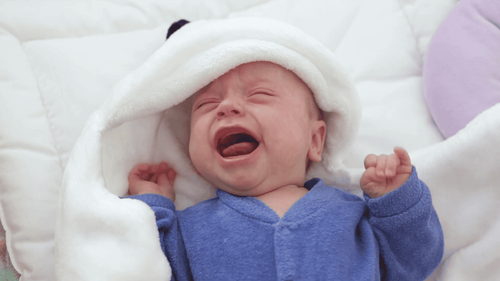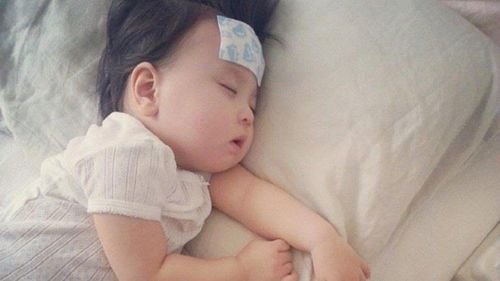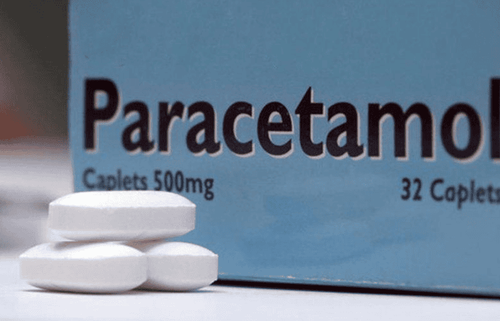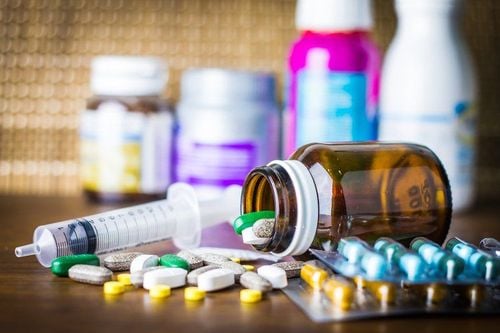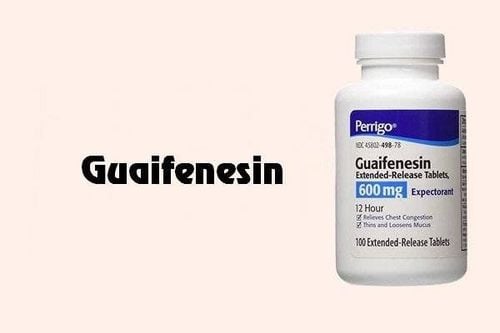This is an automatically translated article.
The article was professionally consulted with Specialist Doctor II Cao Thi Thanh - Pediatrician - Pediatrics - Neonatology - Vinmec Hai Phong International General Hospital.Atypical pneumonia in children is one of the most common types of pneumonia in children. Most children with atypical pneumonia usually have less severe effects than the symptoms of other types of pneumonia.
1. Overview of atypical pneumonia in children
Pneumonia is an infection that occurs in the lungs. In particular, atypical pneumonia is a lung infection caused by atypical bacteria that is difficult to detect by conventional Gram staining.Three common strains of bacteria that cause atypical pneumonia today are:
Mycoplasma Pneumoniae Chlamydophila Pneumoniae Legionella Pneumophila bacteria. In which:
Mycoplasma atypical pneumonia (M.Pneumoniae): It is estimated that there are about 2 million cases of Mycoplasma pneumonia every year, with the main risk subjects being people under 40 years old, tending to live or work in densely populated areas such as schools, dormitories, slums, prisons. However, there are still many cases of pneumonia caused by M.Pneumoniae without any special risk factors. Atypical pneumonia caused by Legionella (L.Pneumophila): This bacterium is often present in the water pipes of buildings or cooling towers, so the susceptible subjects are people who often breathe and continue to breathe. contact with airborne droplets contaminated with L.Pneumophila. However, not everyone who comes into contact with an infectious agent develops pneumonia. Risk factors include: Smoking, people with weak immune systems, the elderly, people with other chronic diseases. This pneumonia can be more severe than other forms of atypical pneumonia. Atypical pneumonia caused by Chlamydophila (C.Pneumoniae): This form of pneumonia is common year-round and is most common in school-age children. It is estimated that about 50% of adults have had this disease before the age of 20. People with the disease usually have only mild pneumonia symptoms and rarely have severe cases.
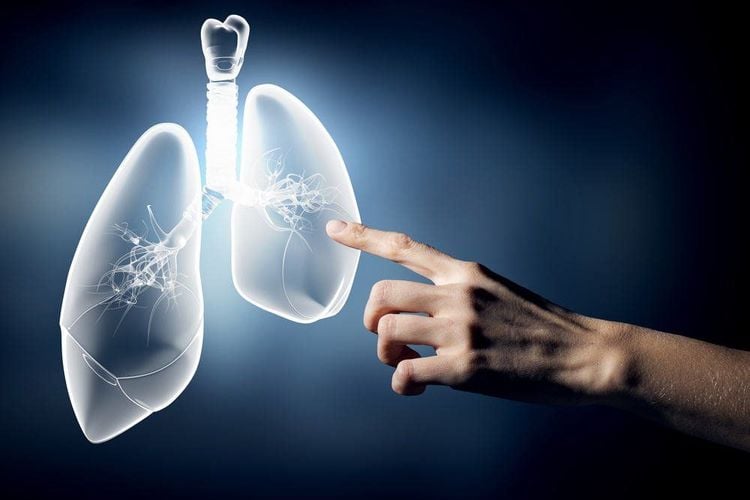
2. Symptoms of atypical pneumonia in children
Most atypical pneumonia in children will have a presymptomatic phase that is evidence of respiratory tract infection. Children with pneumonia may have a high fever, continuous fever from 39 to 40 degrees Celsius. In addition, children may also cough a lot, cough into attacks, hoarse cough accompanied by shortness of breath, rapid breathing. Older children may experience chest pain, headache, muscle pain, muscle stiffness...Especially, Children with Mycoplasma pneumonia may have a rash while Legionella pneumonia may have diarrhea and sometimes confused.
In general, the physical symptoms of atypical pneumonia are quite poor. Physical examination is often less obvious than pulmonary or other symptoms.
3. Diagnostic measures for atypical pneumonia
For atypical pneumonia, X-rays are usually quite accurate. Because atypical pneumonia often has a combination of extrapulmonary lesions such as liver, spleen or heart muscle damage, pleural damage, etc., X-ray images also help identify and differentiate pneumonia from other respiratory diseases such as acute bronchitis.Specifically, the images of lung lesions on X-ray films are mainly parenchymal lesions, reticular, irregularly blurred, diffusely scattered throughout the 2 lungs. In some cases, one or both sides of the pleural effusion will be seen, but the amount of fluid is not much.
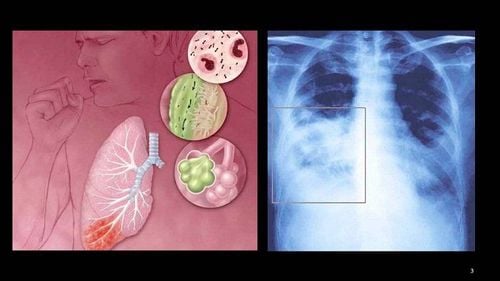
Culture of lung secretions for bacteria Gram-stain method Bacterial swab Throat swab Blood cell count: white blood cell count increased or mildly increased, neutrophils may not increase Blood specific antibody test Bacterial culture from blood sample
4. Measures to treat atypical pneumonia in children
4.1. Treatment with antibiotics To destroy the bacteria that cause atypical pneumonia, antibiotics are the first choice of treatment. Usually, doctors will prescribe Macrolide antibiotics for children (useful in treating bacterial infections). The next group of antibiotics, Quinolones, are also highly effective against bacteria that cause atypical pneumonia.If children have non-severe pneumonia, they can use the oral form, on the contrary, if the child has severe pneumonia, respiratory failure, intravenous antibiotics should be used, combined with oxygen breathing.
Most children with atypical pneumonia recover completely with antibiotic treatment. However, parents (caregivers) need to be aware that the full dose of antibiotics must be used for a course of treatment, because if antibiotics are stopped too soon, the risk of re-infection is very high.
4.2. Anti-respiratory failure If children with pneumonia have signs of respiratory failure, it is necessary to use oxygen therapy (supplementary oxygen) combined with close monitoring of breathing rate, SaO2, blood gases, and airway aspiration.
Along with that is the infusion to provide enough water and electrolytes for the child. Help children reduce fever and foster more nutrients for children to recover quickly.
4.3. Supportive treatment methods For young children, it is recommended to strengthen the child's diet, to breastfeed regularly when sick, and to avoid fasting habits. Regularly clean the child's nose with physiological saline to help the child breathe easier.
Note that the baby should drink a lot of water or encourage the baby to breastfeed more. This is very important because children with pneumonia need to be given plenty of fluids to thin the phlegm, soothe the throat, relieve coughs and avoid dehydration.
If not monitored and treated promptly, in some cases atypical pneumonia can lead to dangerous pneumonia complications.
As a key area of Vinmec Medical system, Pediatrics Department always brings satisfaction to customers and is highly appreciated by industry experts with:
Gathering a team of leading pediatricians: including leading experts with high professional qualifications (professors, associate professors, doctorates, masters), experienced, worked at major hospitals such as Bach Mai, 108.. Doctors All are well-trained, professional, with a mind - range, understanding young psychology. In addition to domestic pediatric specialists, the Department of Pediatrics also has the participation of foreign experts (Japan, Singapore, Australia, USA) who are always pioneers in applying the latest and most effective treatment regimens. . Comprehensive services: In the field of Pediatrics, Vinmec provides a series of continuous medical examination and treatment services from Newborn to Pediatric and Vaccine,... according to international standards to help parents take care of their baby's health from birth to childhood. from birth to adulthood Specialized techniques: Vinmec has successfully deployed many specialized techniques to make the treatment of difficult diseases in Pediatrics more effective: neurosurgery - skull surgery, stem cell transplantation. blood in cancer treatment. Professional care: In addition to understanding children's psychology, Vinmec also pays special attention to the children's play space, helping them to have fun and get used to the hospital's environment, cooperate in treatment, improve the efficiency of medical treatment.
Please dial HOTLINE for more information or register for an appointment HERE. Download MyVinmec app to make appointments faster and to manage your bookings easily.





